We’ve all heard the story of the mob lawyer who had everything but a good name, and gave it all up to show his son. That personal integrity is more important than all the riches of the underworld. His name was “Easy Eddie”. Eddie went on to testify against Al Capone, the most notorious gangster in the history of the underworld. Eddie paid for it with his life. Eddie’s son “Butch” learned the lesson his father taught from beyond the grave and went on to become a world War 2 WWII flying ace, and recipient of the Medal of Honor.

The story is true more or less, but it does lays on the morality, a little thick.
Edward Joseph O’Hare, “EJ” to friends and family, passed the Missouri bar exam in 1923 and joined a law firm. Operating dog tracks in Chicago, Boston and Miami, O’Hare made a considerable fortune working for Owen Smith, the high commissioner for the International Greyhound Racing Association. He’s the guy who patented the mechanical rabbit used in dog racing. EJ and Selma Anna (Lauth) O’Hare had three children together between 1914 and 1924, – Edward (“Butch”), Patricia, and Marilyn.
EJ developed an interest in flying in the 1920s, once even hitching a ride on Charles Lindbergh’s mail plane. For a time he worked as pilot for Robertson Aircraft, occasionally giving his teenage son a turn at the controls.
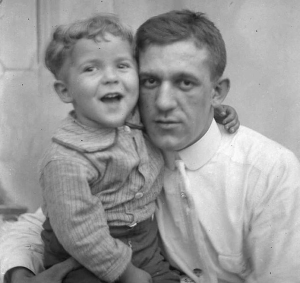
One day, EJ came home to find 13-year -old Butch sprawled on the couch, munching on donuts and banana layer cake. He enrolled the boy in the Western Military Academy in Alton, Illinois. The kid was getting way too lazy.
EJ and Selma divorced in 1927. Eddie left St. Louis for good moving to Chicago while Butch stayed with his mother, attending WMA. It was there the elder O’Hare met Al Capone and later earned his second fortune working as the gangster’s business manager and lawyer.
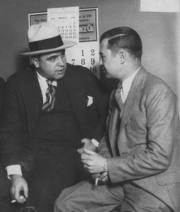
In 1930, O’Hare approached John Rogers, a reporter for the St. Louis Post-Dispatch, asking that he arrange a meeting with the Internal Revenue Service, then in pursuit of Capone on grounds of tax evasion.
It all could have been to restore his good name, or maybe Eddie saw the writing on the wall. Some will tell you he HAD to get right since no Congressman would nominate the son of a gangster, to the nation’s premier naval academy.
Who knows, maybe it’s all of the above. None of them are mutually exclusive. Whatever the motivation, IRS Agent Wilson later said of EJ “On the inside of the gang I had one of the best undercover men I have ever known: Eddie O’Hare.”
Al Capone was convicted of tax evasion in 1931 and sentenced to Alcatraz, becoming eligible for early release in 1939 due to syphilitic dementia. A week before the gangster’s release, EJ left his office at Sportsman’s Park racetrack in Cicero, driving his black ’39 Lincoln Zephyr. Two shotgun wielding gunmen pulled alongside, firing a volley of big game slugs and killing O’Hare, instantly. No arrest was ever made.
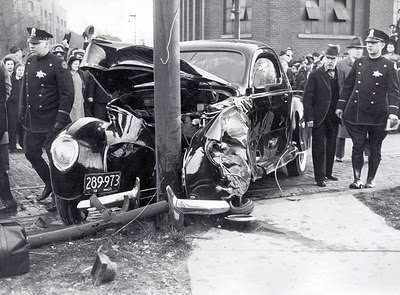
Butch had graduated from the Naval Academy at Annapolis by this time, receiving his duty assignment aboard the USS New Mexico. Shortly after his father’s assassination, the younger O’Hare began flight training at Naval Air Station in Pensacola.
Assigned to the USS Saratoga’s Fighting Squadron, Butch O’Hare made his first carrier landing in 1940, describing the experience as “just about the most exciting thing a pilot can do in peacetime.”
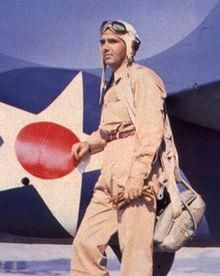
Butch O’Hare became the first American flying Ace of WWII on February 20, 1942.
The carrier Lexington was discovered by Japanese reconnaissance aircraft, 450 miles outside of Rabaul. Six Grumman F4F Wildcat fighters and Lexington’s anti-aircraft guns were engaged with an incoming formation of nine Japanese bombers when nine more bombers were reported incoming.
Six more Wildcats roared off the flight deck of the Lexington, one piloted by Butch O’Hare. He and his wingman Marion William “Duff” Dufilho were the first to spot the V formation, diving to the intercept and leaving the other four fighters too far away to affect the outcome. Dufilho’s guns jammed, leaving Butch O’Hare alone on the unprotected side of his flotilla. One fighter against nine enemy bombers flying in tight V formation, mutually protecting one another with rear-facing machine guns.
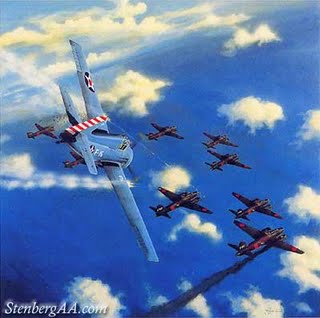
O’Hare’s Wildcat had four 50-caliber guns with 450 rounds apiece, enough to fire for about 34 seconds. What followed was so close to the Lexington, that pilots could hear the carrier’s AA guns. Full throttle and diving from the high side, O’Hare fired short, accurate bursts, the outermost bomber’s right-hand engine literally jumping from its mount. Ducking to the other side and smashing the port engine on another “Betty”, O’Hare’s Wildcat attacked one bomber after another, single handedly taking out five bombers with an average of only 60 rounds apiece.
O’Hare’s Medal of Honor citation calls the performance “…one of the most daring, if not the most daring, single action in the history of combat aviation…”
In a confused night action in the darkness of November 26, 1943, Butch O’Hare stepped from the pages of history. Some say he was cut down by friendly fire, mistakenly shot down by TBF Avenger gunner Alvin B. Kernan. Others say it was a lucky shot by a gunner aboard his old adversary, a Rikko (Betty) bomber. Yet another theory was that O’Hare’s Hellcat caught a wingtip on a wave and cartwheeled into the ocean.
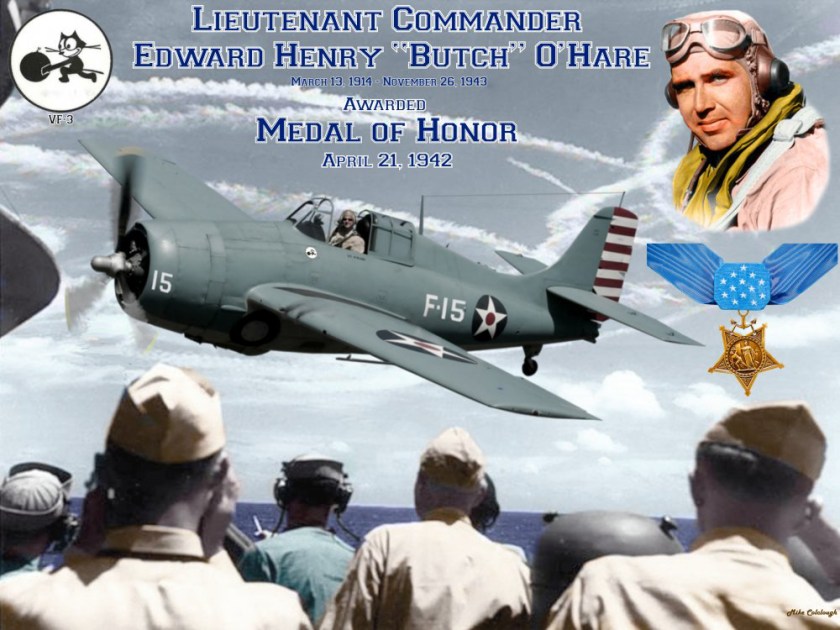
On September 19, 1949, the Orchard Depot Airport in Chicago was renamed in tribute to the fallen Ace. O’Hare International Airport. Neither his body nor his aircraft were ever recovered.



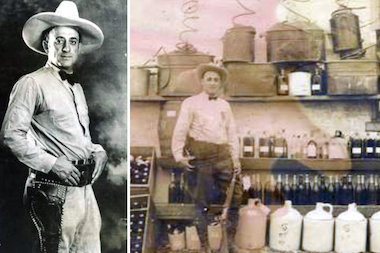

 The small town was enthralled by this new arrival, the town council appointing Hart as Marshall. He was a big fish in a small pond, elected commander of the Legion post and district commissioner for the Boy Scouts of America.
The small town was enthralled by this new arrival, the town council appointing Hart as Marshall. He was a big fish in a small pond, elected commander of the Legion post and district commissioner for the Boy Scouts of America.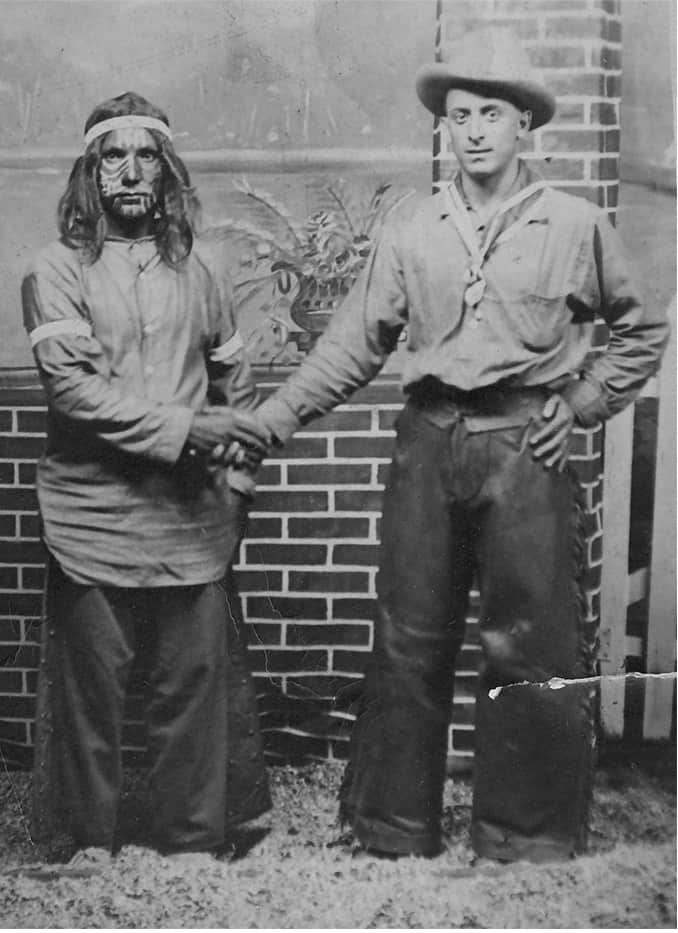
 Hart became livestock inspector after repeal of prohibition, and special agent assigned to the Winnebago and Omaha reservations. He was re-appointed Marshall of his adopted home town but, depression-era Nebraska was tough. The money was minuscule and the Marshall was caught, stealing cans of food.
Hart became livestock inspector after repeal of prohibition, and special agent assigned to the Winnebago and Omaha reservations. He was re-appointed Marshall of his adopted home town but, depression-era Nebraska was tough. The money was minuscule and the Marshall was caught, stealing cans of food.
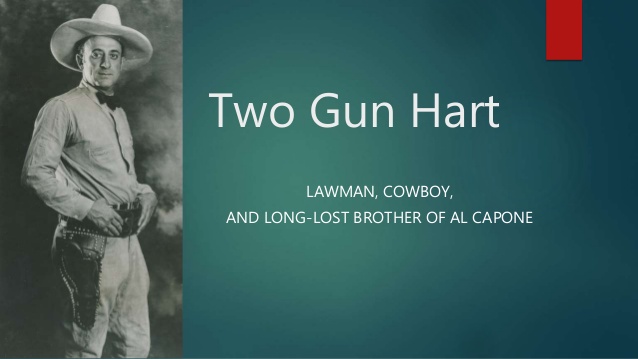
You must be logged in to post a comment.